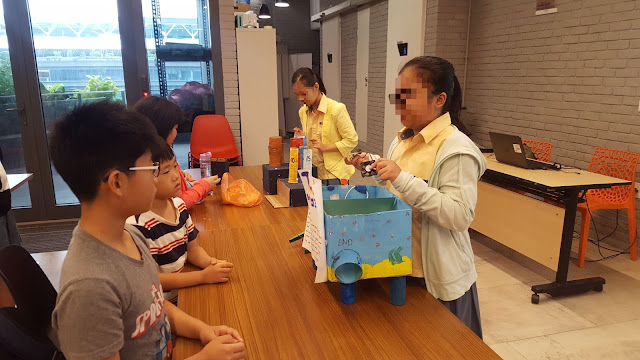Science fiction is one of my favourite genres. It mirrors certain aspects of real life and yet gives you a sense of anticipation. What's exciting is very often it depicts the downside of the future and because we are still living in the present so we remain hopeful of what we can or should not do to prevent the catastrophe. For example, in Black Mirror (available on Netflix), I like dwelling on the contemporary issues in the episodes Nosedive and Arkangel.
Recently, I attended a pre-hackathon workshop and it felt like a fictitious event. The speakers include futurists talking about the Fourth Industrial Revolution, deep tech, blockchain, future shock, future-ready, future leading, future-shaping, ambidexterity, proof of concept, longtail knowledge, just-in-case and just-in-time knowledge. They also talked about microlearning platform such as the SmartUp app because gone are the days where you were made to sit in for 8 hours of training. HA! I have learnt a lot in that evening and it also meant that I didn't know what I don't know. The consolation is that now I know what I didn't know. Sometimes, I wonder why is it that people who are not teachers are frontiers of education whereas I'm standing in front of the classroom.
Learning is becoming more ubiquitous. Joseph Blatt at the Harvard Graduate School of Education talks about lifewide learning which essentially refers to an explicit acknowledgement that learning can and does happen in every facet of life, particularly beyond school hours.
Before the end of Semester 1, my friends and I conducted a workshop for zonal art teachers. For a day, our audience was adults instead of children. As facilitators, it's a totally different experience to facilitate adult learning. When teaching children, we use the word pedagogy. When it comes to adults, the principles of andragogy sets in.
These are some personal observations from my experience:
I wouldn't say teaching adults is easier than children but in the context of this 1-day workshop, our audience was very cooperative and peaceful. During our group's meeting sessions in preparation for this workshop, we are aware that teachers always look forward to applying what they have learnt in their job. So, incorporating hands-on activity was definitely on our list. Our art workshop is not about teaching a type of craft so teachers can bring back to their classrooms. We strongly discourage that as most craft ideas can be found online and self-taught. Second, since our workshop is bi-annually, it would be an ineffective way to teach.
It was an inquiry-based lesson where teachers do ideas generation. Through making our thinking visible, we discussed our unique positions and the circumstances that we are in which affected how we think and plan. We also found that sometimes teachers are too eager to incorporate new art techniques into their lessons without knowing their purpose. It could be a coping mechanism and it also meant that the teacher might be surviving instead of thriving.
Next, it also dawns on me that children are often tasked to create an artwork in an artist particular style. Why? Techniques and stylistic problems are not the only way through artmaking. An example is Cubism, Picasso and Braque fragment forms and presents them from multiple perspectives. It's the issue of reality, how we or artworks perceive or represent reality. Not all younger children are ready to hold such a discussion but introduce a picture book: They all saw a cat by Brenden Wenzel about perspectives in reality and we can make Cubism lesson a more meaningful one.





































